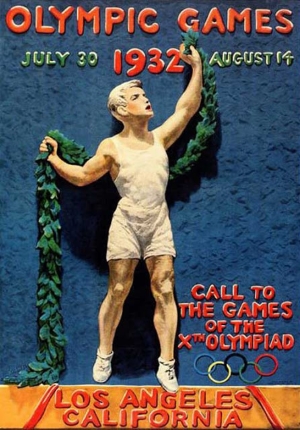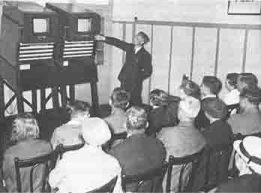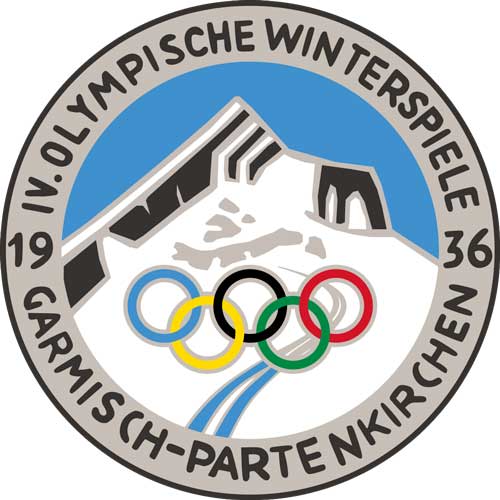THE TRIUMPH OF OLYMPISM
From the Los Angeles Olympics to the consecration of Jesse Owens
“The time had truly come to show the sporting youth of the United States some gratitude for the effort they had made since Athens, and for their always brilliant and numerous participation in past Games. This triple motive decided the members of the I.O.C. unanimously in favor of awarding Los Angeles the celebration of the Xᵉ Olympiad”.
Pierre de Coubertin in Mémoires olympiques, 1931
Olympism, the Spirit of the Olympic Games
This quote by Pierre de Coubertin (1863 – 1937) was published in his book “Mémoires olympiques”, published in Lausanne in 1931. A year before the first modern Olympic Games were held on American soil, Baron de Coubertin had fully grasped the stakes of the Xᵉ Olympiad : to transmit to American youth the spirit of the Olympic Games.
The spirit of the Olympic Games can be summed up in one word : Olympism. A true philosophy of life, Olympism fuses the power of the body, the will and the mind. Olympism goes beyond sport; it’s a notion that carries with it the idea of surpassing oneself. Performance is no longer the goal; it becomes a means of proving to mankind that every being is capable of going beyond established limits, of achieving a feat. Ultimately, the spirit of the Olympic Games is to put sport at the service of humanity, using it as a vehicle to build a better world. A true philosophy of life, Olympism aims to educate young people by conveying strong values such as mutual understanding, the spirit of friendship, solidarity and fair play. Condemning all forms of discrimination, and despite the major tensions and climate of hatred that gripped Western society in the 1930s, Olympism established itself as the sacred value of the “Olympics” in 1936, its true purpose.

1932, The Los Angeles Olympic Games
Despite the Crash of 1929 and the ensuing economic depression in the United States, the 1932 Olympic Games proved to be one of the most significant and defining editions in the history of the modern Olympic Games.
Inaugurated on July 30, 1932, the opening ceremony of the X Olympiad took place in front of 105,000 spectators in a legendary stadium : the Memorial Coliseum. In 2028, this monument, built in 1923, will host the Olympic Games ceremony for the third time in its history, making it the most emblematic stadium in the history of the Olympic Games. Introducing a new format, and marking a milestone in the history of timekeeping, the Los Angeles Olympic Games are a radical departure from previous editions.
Omega, Official Timekeeper
For the first time, the Olympics will last 16 days. Where previous editions had lasted several weeks, or even months, this new format, which is still the current standard, will enable the event to be experienced with greater intensity. But if the 1932 edition has gone down in watchmaking history, it’s because it elevated one of the greatest Swiss brands to the rank of official sports timekeeper. Omega. As the first watchmaker to time the Los Angeles Olympic Games in their entirety, the Swiss brand gained international visibility thanks to this unprecedented partnership. Already a prestigious brand at the time, Omega enjoyed an excellent reputation in Europe. Founded in 1848, the company had become one of Switzerland’s most important watchmakers in just 50 years. Awarded its first prize in 1896, by the dawn of the 20th century the company was already producing almost 100,000 watches a year. In “Omega, Journey through Time”, a must-read reference book, Marc Richon, former curator of the Omega Museum, tells us that by this time the brand was so sought-after that it was already being copied. It was at this time that the first counterfeits appeared on the market. Omega’s reputation, already well established, was boosted tenfold by the Los Angeles Olympic Games.
Appointing an official timekeeper was a revolution in the world of competition, because until then, Olympic judges had to come equipped with their own chronographs! Accuracy was therefore “relative”, and results were often the subject of protest or debate. In 1932, an Omega watchmaker was commissioned to transport the 30 chronographs, all certified chronometers by the Neuchâtel Observatory, from Biel to Los Angeles. It was thanks to the reliability of its timepieces that the Manufacture won the support of the International Olympic Committee. All the judges were trained by Omega to use the measuring instruments correctly.
Timekeeping to 1/100ᵉ of a second
With its precision watches, Omega introduces a real innovation into Olympic history: timekeeping to 1/100ᵉ of a second! The official use of this new timekeeping will, in fact, decide between Americans Eddie Tolan and Ralph Metcalfe in the 100-meter final.
If this event is particularly significant in the brand’s history, it’s because during the Los Angeles games in 1932, new world records were set in almost every discipline represented. During this edition, China took part in the events for the first time, which undoubtedly enabled the Swiss brand to make a name for itself internationally and conquer new markets.
By the end of the Los Angeles Olympic Games, Omega’s precision was being hailed by the sporting world, and the brand became regarded in the collective unconscious as the supreme benchmark for reliability.
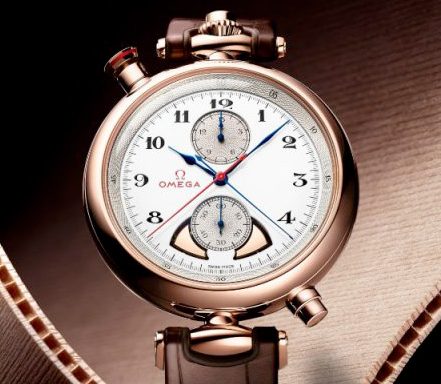
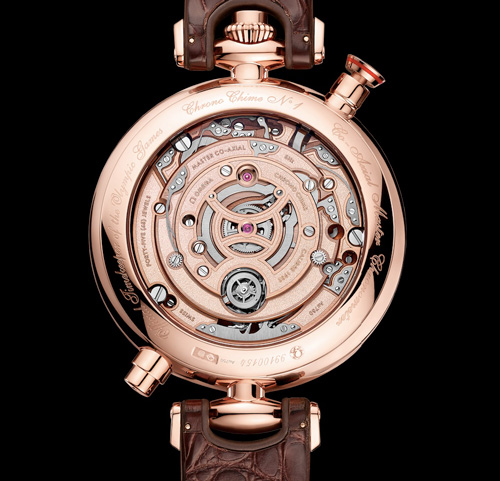
The introduction of caliber 1130
To time the Los Angeles Olympic Games, Omega develops a new caliber: the 1130. Prior to 1932, Omega had produced only two chronograph calibers. The first was launched in 1898, and the second in 1908. In 1909, Omega became the official timekeeper of the “Gordon Bennett” aeronautical cup in Zurich, a competition involving hot-air balloons and gas balloons.
In 1932, to develop its famous caliber 1130, Omega relied on the collaboration of Lémania, which that same year joined the Société Suisse pour l’Industrie Horlogère (SSIH), an association that until then had brought together two manufacturers: Omega and Tissot: Omega and Tissot.
With this new caliber, which would equip all the chronographs in the “Olympic” collection, Omega conquered the world of sport. From 1932 onwards, the brand specialized in sports timekeeping and continued to develop even more precise measuring instruments.
To commemorate this milestone in its history, Omega developed a new movement in 2022: the “1932 OMEGA Co-Axial Master Chronometer” calibre. The most complex movement ever produced by the company, this innovation was launched in a limited series and priced at €526,700. With its case engraved “Official Timekeeper Olympic Games”, Omega wished to celebrate its 90th anniversary as Official Timekeeper of this legendary sporting event.
1936, the Berlin Olympic Games
The first “Olympics” to be broadcast on television, the 1936 Berlin Games brought unprecedented visibility to a champion no one had expected: Jessie Owens. At a time when America was as racist as Germany, black and Jewish athletes were subjected to unbearable discrimination and pressure, leading to the denunciation of certain organizations and boycott movements. While in America the time was ripe for racial segregation, in Germany the Nazis instrumentalized the XIᵉ Olympiad with the aim of turning it into a propaganda operation. However, the U.S. Olympic Committee, despite public opposition, battled fiercely with German Chancellor Joseph Goebbels to obtain a guarantee that “no Jews or blacks” would be excluded from the events. Despite the hostility of the white public in Berlin, the whole world was thrilled by the astonishing performance of a young American athlete: Jesse Owens. Considered the first black athlete of international renown, this Alabama-born grandson of a slave went down in history as not only the best sprinter of the inter-war period, but also as the finest embodiment of what Olympism stands for.
The Berlin Olympics could have gone down in history as the greatest attempt at Nazi instrumentalization, but Jessie Owens shattered the thesis of the supposed superiority of the Aryan race. During the 1936 Olympic Games, he became the most successful Olympic athlete of the Games. Winning 4 gold medals, all timed by Omega, Owens smashed the world records in the 100-meter, 200-meter and long jump, a discipline in which his 8.13-meter performance in 1935 remained unmatched for over a quarter of a century.
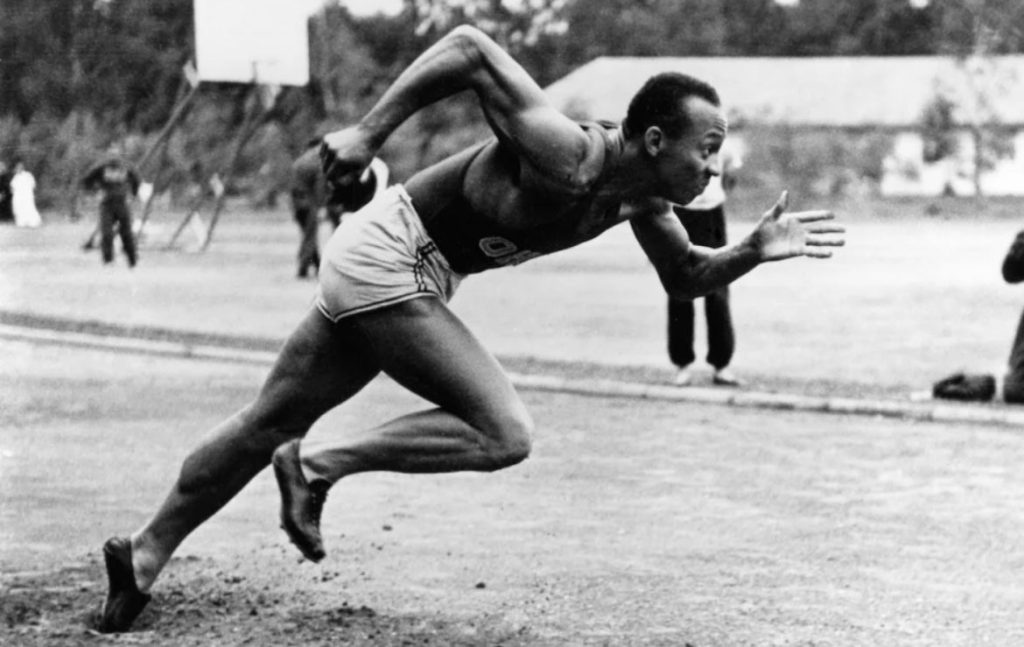


Thanks to Jesse Owens, Olympism eclipsed racism, and the Berlin Olympic Games conveyed the values of courage, perseverance, fraternity, ambition, constant surpassing of oneself, and humanist and democratic ideals.
At the XIᵉ Olympiad, Omega returned to its role as official timekeeper.
In 1936, not 30, but 185 chronographs were made available by Omega to the Olympic judges. In the same year, the Biel-based company recorded a new performance. In a precision test carried out by the Kew Observatory in England, an Omega caliber achieved a score of 97.8/100, a precision record still unmatched today!
At the 1936 Winter Olympics, held in Garmish-Partenkirchen, Germany, Omega developed a new method of timekeeping. For the first time, two different chronographs were used to measure the downhill skiing events. One is used to measure the skiers’ start times, and the other to record their finish times. Each is recorded and the referees calculate the difference to determine the precise duration of the run. While this new method is not infallible, it is revolutionary, and was used only in this Olympic season.
Omega, the art of Olympic timekeeping
Through these two great Olympiads, marked by the triumph of Olympism, Olympic timekeeping was to become Omega’s new spearhead. Still key moments in the history of Olympic timekeeping, the 1932 and 1936 Games were to mark a new chapter in Omega’s history.
In fact, the pocket chronograph with which the Manufacture achieved the record precision rating of 97.8/100 in 1936 can now be seen in the collections of the Omega Museum. This unique location, also known as the “City of Time”, bears witness to the importance of the Olympic Games for the brand’s research and development. Inside this extraordinary place, every visitor can experience Olympic timekeeping on a 9-metre-long race track. You can record your performance using Omega technology.
By bringing the Olympic Games into its own museum, the Manufacture reaffirms that its role as Official Timekeeper of the Olympic Games is inseparable from its DNA.
Coming up #2 The 1948 London Olympic Games






